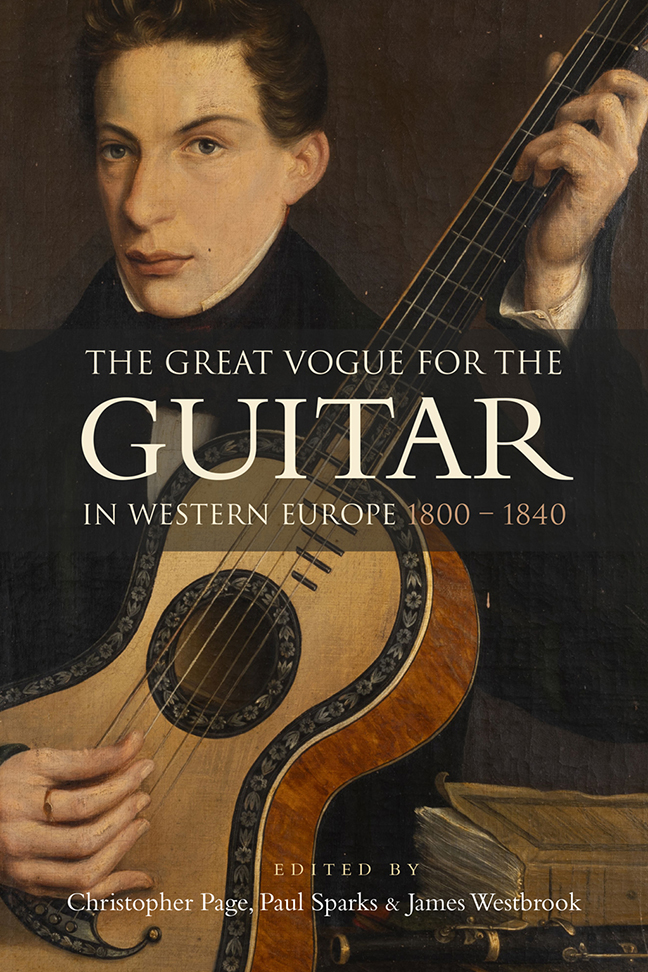Book contents
- Frontmatter
- Dedication
- Contents
- List of Illustrations
- Music examples
- The editors and the contributors
- Foreword
- Acknowledgements
- List of Abbreviations
- Introduction: The Great Vogue for the guitar
- I Contexts
- II The repertoire and its composers
- Appendix: A note on string-making
- Glossary of guitar terms
- Select Bibliography
- Index
2 - The Great Vogue for the guitar: An overview
Published online by Cambridge University Press: 10 January 2024
- Frontmatter
- Dedication
- Contents
- List of Illustrations
- Music examples
- The editors and the contributors
- Foreword
- Acknowledgements
- List of Abbreviations
- Introduction: The Great Vogue for the guitar
- I Contexts
- II The repertoire and its composers
- Appendix: A note on string-making
- Glossary of guitar terms
- Select Bibliography
- Index
Summary
As the nineteenth century began, it was clear that something new was stirring among players of the guitar, especially north of the Alps and Pyrenees. For most players in those lands, the years around 1800 brought the transition from guitars of the eighteenth century, strung in various ways, to the instrument of settled design with six single strings that is still in use today (Illustration 2.1). In 1801, François Doisy in Paris noted that ‘the guitar is played these days more than ever’, which was saying a good deal since it had enjoyed nearly fifty years of popularity in the French capital by the time he wrote. In the following year, a chronicler of London high society recorded that the guitar seemed ‘to be daily gaining ground in the circles of fashion’. There was soon a sense of progress on a wider front. ‘As a pursuit,’ wrote Simon Molitor of Vienna in 1807, ‘playing upon this instrument has spread extraordinarily in the last few years and seems to be increasing with the flood of new compositions every month.’ August Harder, whose guitar method was written before October 1813 and published in Berlin, agreed that ‘no instrument has ever found such a general acceptance in such a short time, or has risen to the rank of a favourite, as quickly as the guitar has done in our days’. An influential teacher, Francesco Molino, went further and described the use of the guitar as ‘almost universal’ in the bilingual French and German edition of his method of c1821.
This wave of enthusiasm for the guitar was not without precedent, however, for there had been earlier peaks of interest, notably in the sixteenth and seventeenth centuries. Moreover, it was in some respects a representative rather than a revolutionary development in the musical life of the early nineteenth century. The Vogue chronicled in this book, which began around 1800 and extended into the 1840s, offers one among many signs that amateur music-making, in salon or drawing room, became an increasingly popular pastime during those decades, and the guitar was by no means the only instrument that released a flood of printed instruction books and began to be more widely cultivated.
- Type
- Chapter
- Information
- The Great Vogue for the Guitar in Western Europe1800-1840, pp. 29 - 40Publisher: Boydell & BrewerPrint publication year: 2023



